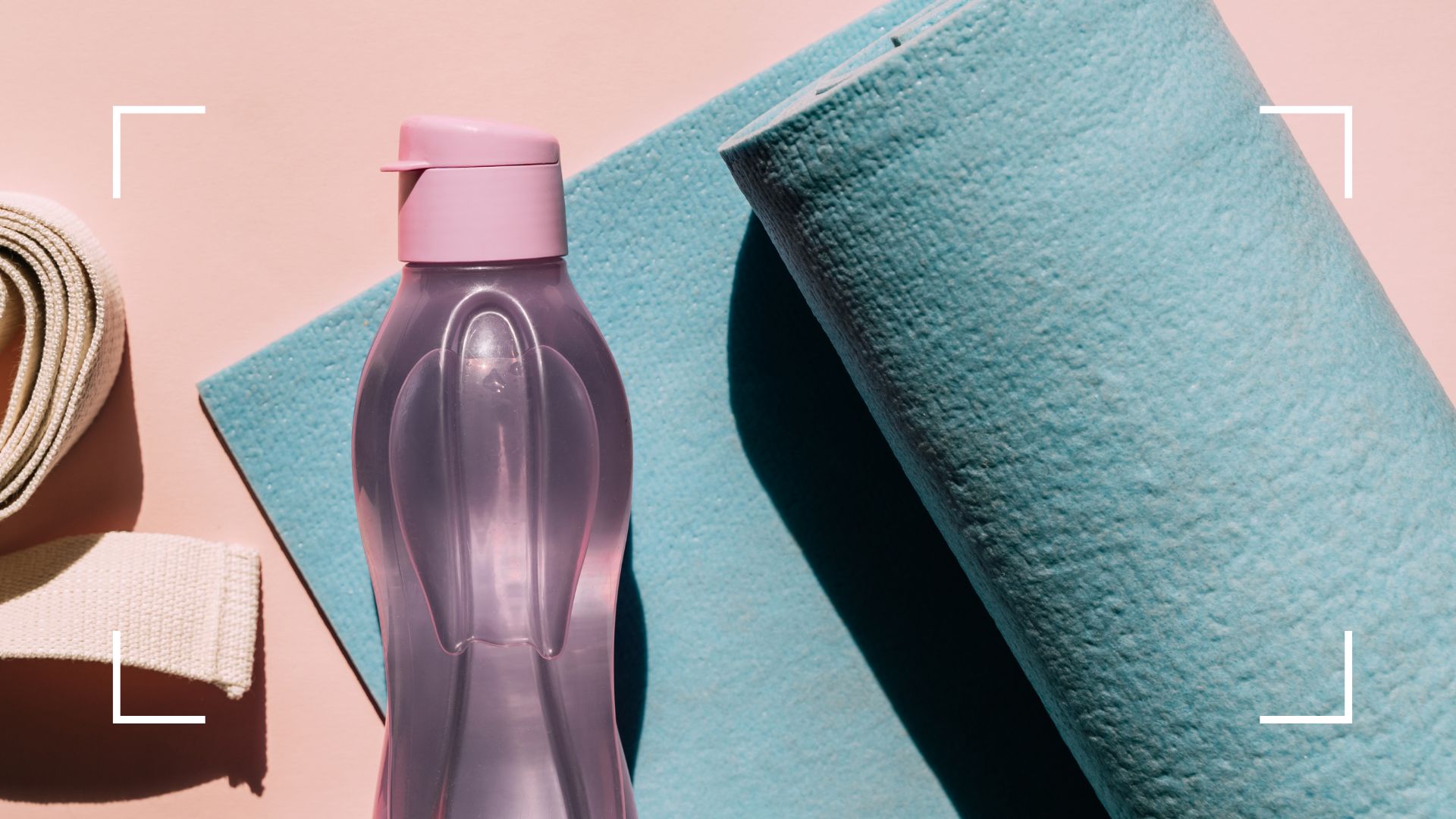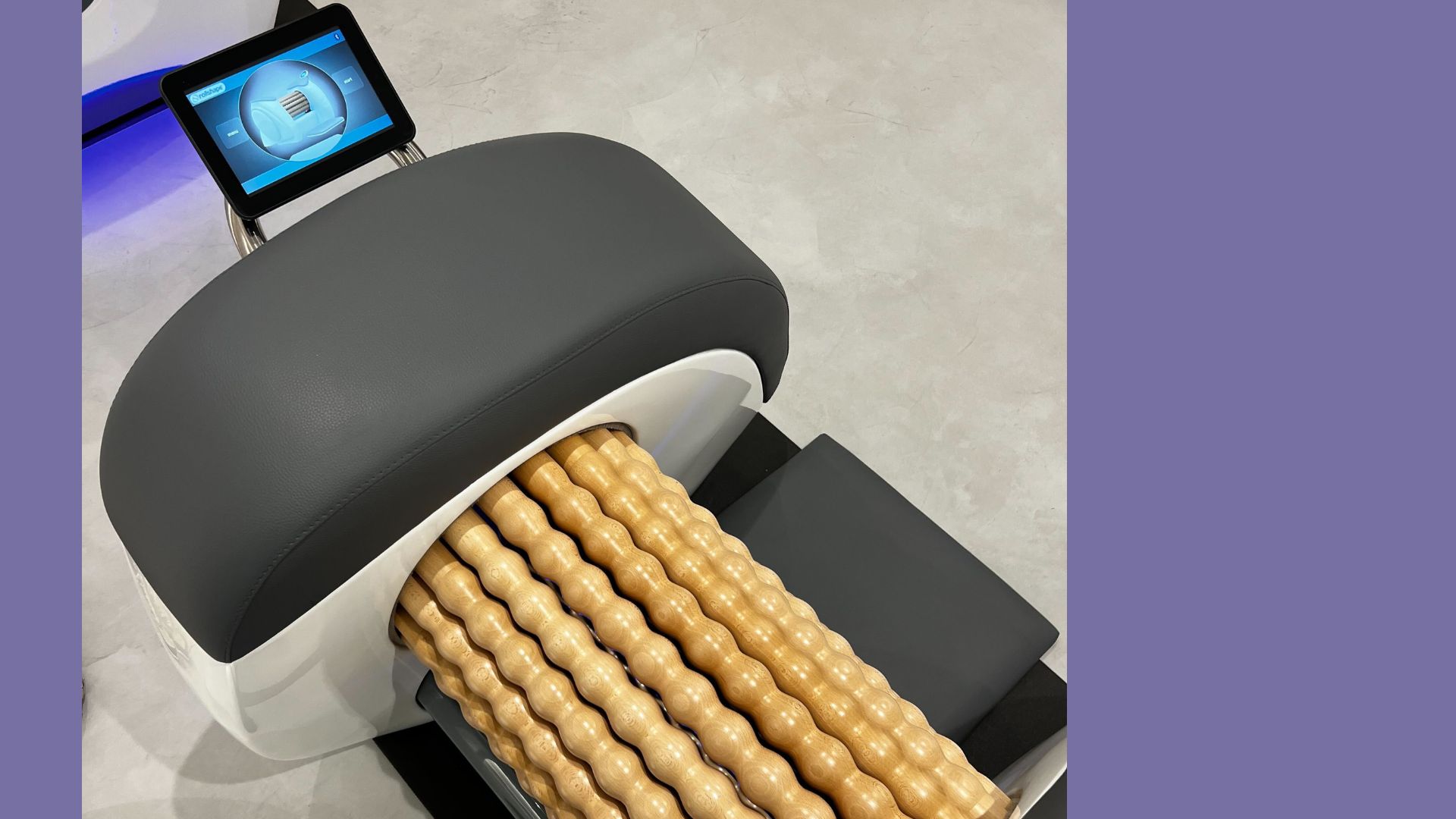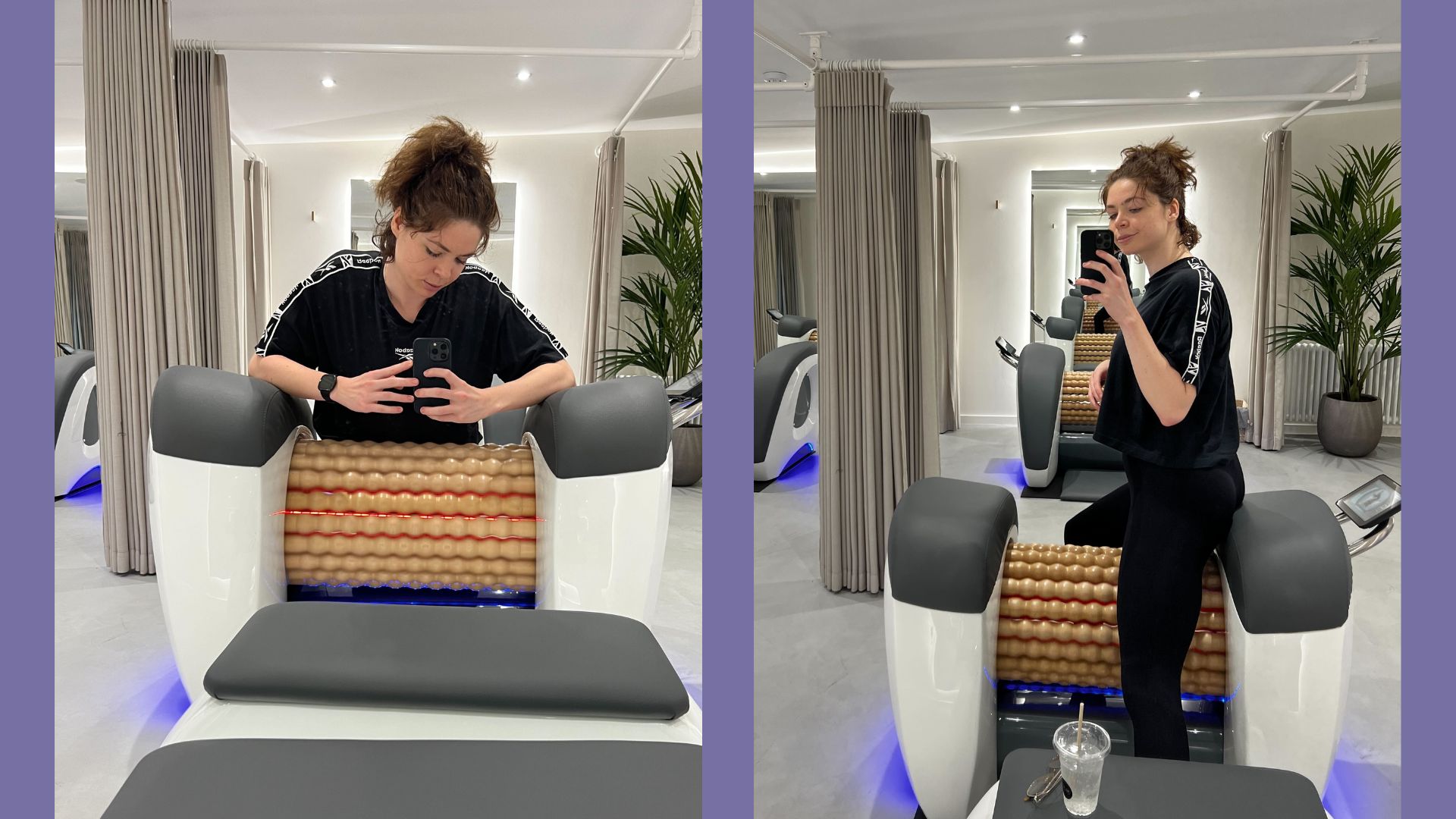Does lymphatic drainage work? Here’s what happened when I tried it
Does lymphatic drainage work? Health editor Grace Walsh went through it to find out


Does lymphatic drainage work? If you’d asked me a couple of weeks ago, I’d have more questions about what the lymphatic system was than whether draining it was beneficial or not. However, after spending a morning experiencing just that, I have an answer to the question.
As woman&home’s digital health editor, I’m no stranger to trying new workouts, new ways of eating, and other wellness activities that supposedly improve the way we sleep, work, play, and recover. I've had sports massages and spent time (probably too long) stretching out on foam rollers in the gym, but lymphatic drainage and body rolling machines were totally new to me.
While there are many benefits of lymphatic drainage for all parts of the body, everything from speeding up digestion to reducing puffiness in your face through techniques like gua sha, it's undoubtedly got to be one of the best exercise recovery methods out there - as I discovered on my visit to Re Place in Notting Hill, London, last week.
What role does the lymphatic system play in our bodies?
The lymphatic system is one of the most underrated networks in the body, made up of tissues, vessels, and organs that work simultaneously to move lymph - a colorless fluid made up of white blood cells, fats, and protein - back into our bloodstream.
"The lymphatic system has three key roles," explains Dr Nina Fuller-Shavel, a leading functional and integrative medicine doctor. “Fluid balance firstly. The normal function of the lymphatic system is essential for returning a proportion of tissue fluid back into circulation, so that excess doesn’t build up in the tissues. Where the normal lymphatic system function is disrupted, like through surgical removal of the lymph nodes, localized swelling called lymphedema may occur.”
Secondly, the lymphatic system plays a big role in how we absorb nutrients - “particularly fats through intestinal lymphatic vessels,” she says.
And thirdly, our immune and lymphatic systems work together to make sure that we can push out any harmful bacteria from the body. “For example, lymph nodes are connection hubs for recognition of harmful microorganisms to help orchestrate a response to infection. That’s why they swell up when we have an infection. Additionally, several parts of the lymphatic system are involved in the production of immune defence cells, as well as housing them.”
Sign up to our free daily email for the latest royal and entertainment news, interesting opinion, expert advice on styling and beauty trends, and no-nonsense guides to the health and wellness questions you want answered.
So what's the point of lymphatic drainage? "Lymphatic drainage massage, or MLD [manual lymphatic drainage] is a gentle form of massage that aims to help lymph movement from the tissues back into lymphatic circulation," explains Dr Fuller-Shavel, who is also the founder of The Synthesis Clinic. “It can help relieve fluid build-up and reduce tissue swelling.”
As the body relies heavily on the lymphatic system to remove harmful waste products that can lead to serious medical conditions, research in association with Harvard Medical School explains, it's important to keep it moving. But unlike the circulatory system, which has the heart to pump blood around the body, there’s no organ to keep this waste moving through the lymphatic system. Instead, the network relies on movement and the contraction of your muscles to keep it moving, which is why exercise is so essential and lymphatic drainage massage can be so beneficial.
While it’s traditionally used as a recovery method for those who’ve had surgery on one part of the lymphatic system, the network plays such an integral role in our bodies that it’s hardly surprising many people have experienced some benefits of lymphatic drainage.

Does lymphatic drainage work?
Yes, lymphatic drainage can be hugely beneficial for many different types of people, confirms Dr Fuller-Shavel. “For the average person, the benefits of MLD are less clear than in specific clinical situations, like lymphoedema after surgery. However, there is some evidence that it may help reduce swelling and pain after general musculoskeletal injury, improve joint movement, and may support post-exercise recovery,” she says.
“It can help with swelling and leg discomfort during late pregnancy and it may improve some of the symptoms of fibromyalgia, such as stiffness, [according to research from the University of Sao Paulo],” she adds. “There’s even early research supporting the benefits of lymphatic drainage for constipation when done by a trained specialist.”
I went through a session at Re Place on the body roller machine - a device specially designed to stimulate cell regeneration and increase blood flow to the muscles by increasing the temperature during the rolling and by sending out infrared rays - and these are the benefits I experienced first-hand.
1. Better blood circulation
When I arrived at the studio last week, I was feeling a little under the weather. My muscles were aching as I’d just started training for a half-marathon alongside my regular strength training sessions, and given that I'd have time over the weekend to rest, I was expecting a heavy dose of delayed onset muscle soreness (DOMS) on Saturday morning - but that wasn't what happened at all. Does lymphatic drainage work for muscle soreness? Absolutely.
Studies by The Jerzy Kukuczka Academy of Physical Education looking at muscle fatigue in athletes post-exercise support this theory as well. They show that lymphatic drainage massage has the potential to reduce our blood lactate concentration levels, which is one of the markers of fatigue within a muscle that's just been exercised, and reduce our post-exercise muscle tension by decreasing swelling and increasing healing. It's one way to ensure that DOMS doesn't hit in the days after exercise.
2. Less tired than normal for the rest of the day
I was also relatively tired when I arrived at my session. Without a morning coffee yet, I was feeling the effects of the working week - it was Friday morning after all. But after my session, I felt like I'd had a burst of energy and a brain refresh. This is a feeling that many people, including myself, get in the morning after exercise and it's one of the reasons to work out in winter. Although, I did find that I needed to drink a lot more water - which is to be expected, considering that you're encouraging your body to remove waste.
It's a positive effect that's been monitored by scientists too, particularly after the Covid-19 pandemic, where one of the biggest symptoms of long Covid was fatigue. In a study by The University of Manchester, researchers found that lymphatic drainage may be particularly beneficial for women experiencing the problem, with an impressive 60.5% reduction in feelings of fatigue post-drainage session, when combined with other gentle stretching activities.

3. Fewer cravings
There's not any significant research to suggest the two are linked for most people, however, I did find that the session had a real impact on my eating habits in the hours afterward.
Personally, I struggle to get through the day without a 3pm snack. On this particular day, following my lymphatic drainage appointment, I sailed through to the evening after lunchtime and didn't experience any niggle of a sugar craving. It could be a placebo effect or a combination of other factors, but this is a rare occurrence for me.
4. A new type of relaxation
Does lymphatic drainage work? If you're looking to learn how to relax your mind then most certainly. This was undoubtedly one of the most relaxing recovery sessions I’ve had, while still feeling like my body was being put through the recovery process. Perhaps because of the therapist-free environment, where there was no need for small talk while my muscles were being grounded by the machine, the total control I had over the speed and pressure of the massage, the curtain for privacy, or the infrared and collagen lights that fire through the machine during the session.
Infrared therapy is a well-founded recovery technique, with plenty of research from the likes of Massachusetts General Hospital to show that this type of light helps cells to regenerate and repair themselves, but it's also a solid tool for improving other aspects of your wellness routine - such as learning how to sleep better. Research from the China Institute of Sport, for instance, shows that infrared light applied to the body in the evening before bed can regulate our natural circadian rhythms and help us fall asleep faster and enable us to enter a more restorative, deep sleep phase thanks to the additional production of melatonin, the sleep hormone.
Another study by Harvard Medical School discovered that it could be beneficial for those with major mental health issues too such as anxiety and depression, after patients reported a significant reduction in symptoms in the two weeks after the session.

What does lymphatic drainage feel like?
There are many types of lymphatic drainage, with manual massage by a therapist being the most popular one, so they'll all feel slightly different from each other. In my experience though, the body roller machine was a little challenging at the beginning and it can feel uncomfortable if the knobs make contact with a bone - but it did really feel like it was getting the job done.
The machine begins whirring and the first position, one of many that the on-screen instructor tells you to get into, requires you to put the base of your feet onto the roller. As a hard wooden surface covered in rows of slightly pointed knobs, it feels a little ticklish as it whirs away - but I quickly got used to this. As each position only lasts for a minute and a half, you have just enough time to find the angle that works for you before you have to move on to the next one.
One of the best had to be also one of the easiest to get into though. Kneeling sideways with the sides of your thighs against the machine, you can move from side-to-side to target the different parts of your quadriceps - which are always the muscles that suffer the most post-training for me.
It then guides you through all the different areas of your body below the neck, from your feet and calves to the top of your back. Just be sure to avoid any areas where your bones are prominent as the machine will bump away uncomfortably and you'll be left with a bruised feeling post-drain.
As one of the biggest workout mistakes you can make is not taking recovery seriously, overall, it seems like lymphatic drainage is a highly effective way to take your post-workout self-care routine to the next level.

Grace Walsh is woman&home's Health Channel Editor, working across the areas of fitness, nutrition, sleep, mental health, relationships, and sex. She is also a qualified fitness instructor. In 2025, she will be taking on her third marathon in Brighton, completing her first ultra marathon, and qualifying as a certified personal trainer and nutrition coach.
A digital journalist with over seven years experience as a writer and editor for UK publications, Grace has covered (almost) everything in the world of health and wellbeing with bylines in Cosmopolitan, Red, The i Paper, GoodtoKnow, and more.